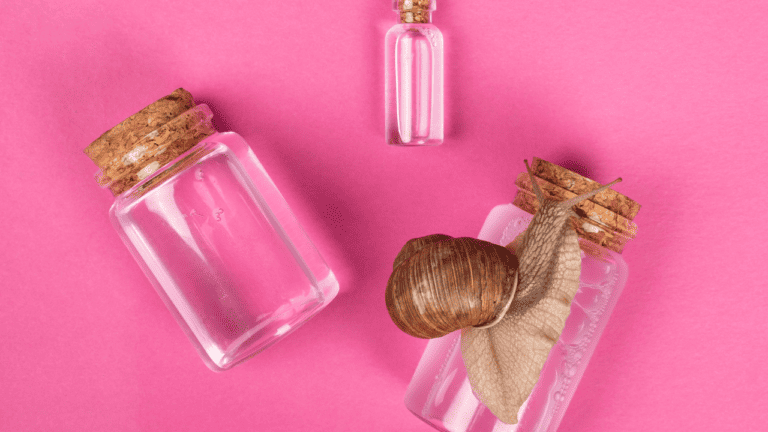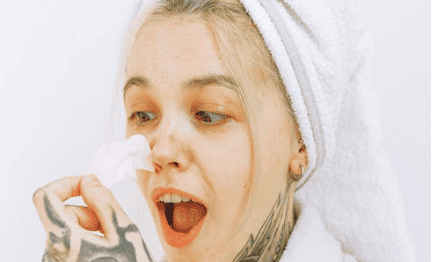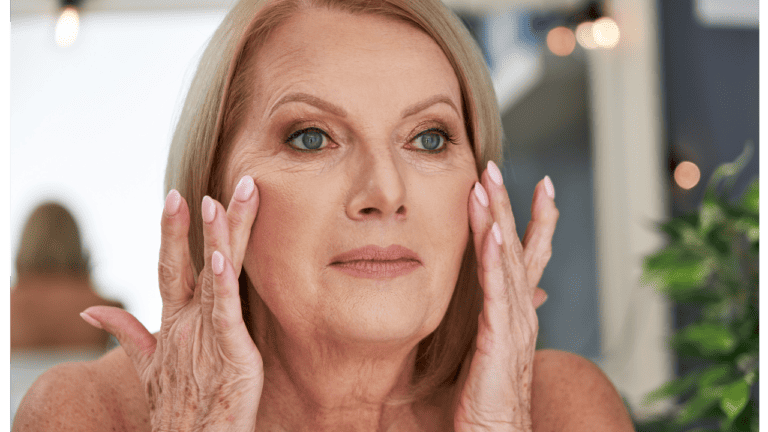Pimple patches are a very popular solution for treating acne. They are designed to absorb the pus and oil from pimples, reducing inflammation, and promoting healing. However, some people have raised concerns that pimple patches may delay the healing process. The short answer is no, pimple patches do not delay healing, in fact they are made of hydrocolloid which was originally used for healing wounds before we started using them for pimple patches.
While pimple patches are effective in reducing inflammation and preventing further infection, they may not be the best solution for everyone. If you use it too long or improperly, in some cases, they can cause irritation or allergic reactions, which can further delay the healing process. Additionally, if not used properly, pimple patches can trap bacteria and oil under the skin, leading to more severe acne or scarring. In this article we’ll understand pimple patches a bit more and how to use them correctly.
Key Takeaways
- Pimple patches can be an effective solution for treating acne, but they may not be suitable for everyone.
- Improper usage of pimple patches can lead to further irritation, infection, or scarring.
- It is important to consult with a dermatologist to determine the best acne treatment plan for your skin type and condition.
Understanding Acne and Pimple Formation
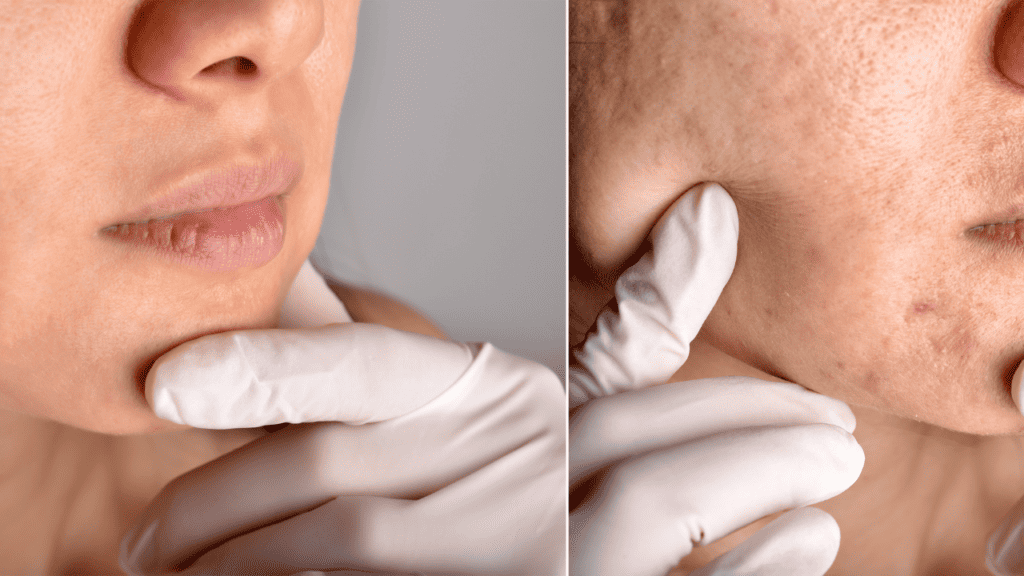
Acne is a common skin condition that affects both teenagers and adults. It occurs when the hair follicles become clogged with oil and dead skin cells, leading to the formation of pimples, blackheads, and whiteheads. While acne is not a life-threatening condition, it can be uncomfortable and unsightly, and it can have a significant impact on a person’s self-esteem.
The Role of Bacteria and Inflammation
One of the primary factors that contribute to acne formation is the presence of bacteria on the skin. Propionibacterium acnes, a type of bacteria that naturally lives on the skin, can become overgrown and cause inflammation and infection. When the hair follicles become clogged, the bacteria can grow and multiply, leading to the formation of pimples.
In addition to bacteria, inflammation also plays a crucial role in acne formation. When the hair follicles become clogged, the body’s immune system responds by sending white blood cells to the area. These white blood cells release chemicals that can cause inflammation, redness, and swelling.
Types of Acne: Whiteheads, Blackheads, and Cystic Acne
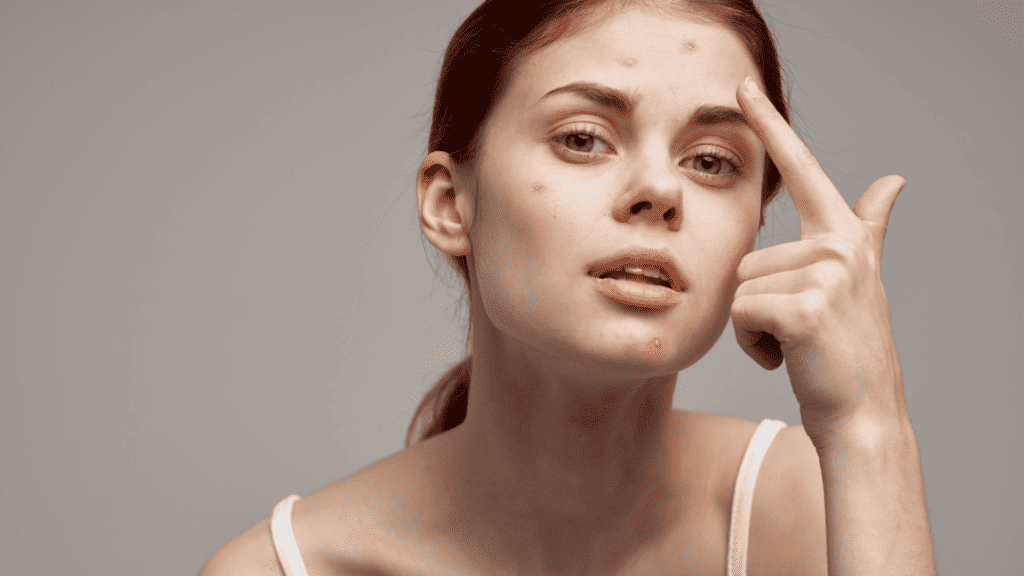
Acne can take many different forms, but the most common types are whiteheads, blackheads, and cystic acne. Whiteheads are small, raised bumps that form when the hair follicles become clogged with oil and dead skin cells. They are typically white or yellow in color and do not have an opening on the skin’s surface.
Blackheads, on the other hand, are small, dark bumps that form when the hair follicles become clogged with oil and dead skin cells. Unlike whiteheads, blackheads have an opening on the skin’s surface, which allows the oil and dead skin cells to oxidize and turn dark.
Cystic acne is a severe form of acne that occurs when the hair follicles become deeply clogged with oil and dead skin cells. It can cause large, painful bumps that are filled with pus and can leave scars. Cystic acne is often difficult to treat and may require prescription medications.
In conclusion, understanding the role of bacteria and inflammation in acne formation, as well as the different types of acne, is crucial in developing effective treatment strategies. While acne can be frustrating and uncomfortable, there are many treatments available that can help reduce symptoms and improve the appearance of the skin.
Pimple Patches Explained
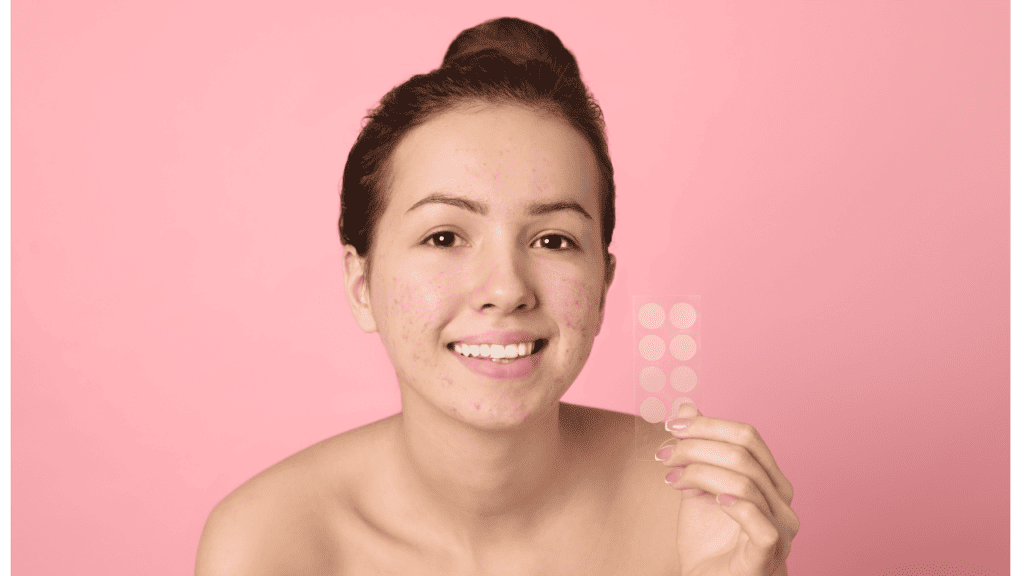
Small, transparent stickers that are placed over a pimple to help reduce inflammation, pimple patches are a convenient and effective way to prevent further infection, and promote healing.
Hydrocolloid Patches and Their Function
Most pimple patches are made as a hydrocolloid patch. These patches are made from a special type of material that are designed to absorb moisture and create a moist environment. This moist environment helps to speed up the healing process by keeping the wound hydrated and preventing scabbing.
Hydrocolloid patches work by creating a seal over the pimple, which helps to prevent bacteria from entering the wound and causing further infection. Also, we often feel the urge to touch and pick at our pimples and this helps to prevent further irritation. They also help to absorb excess oil and dirt from the skin, which can help to reduce inflammation and prevent new pimples from forming.
Active Ingredients in Acne Patches
In addition to the hydrocolloid material, many pimple patches also contain active ingredients that are designed to help treat acne. One common active ingredient is salicylic acid, which is a beta hydroxy acid that helps to exfoliate the skin and unclog pores.
Another common active ingredient is tea tree oil, which is a natural antiseptic that can help to kill bacteria and reduce inflammation. Tea tree oil is also known for its soothing properties, which can help to reduce redness and irritation.
While pimple patches can be a helpful tool in the fight against acne, it’s important to remember that they are not a cure-all. They work best when used in conjunction with other acne treatments, such as a gentle cleanser and a topical acne medication. It’s also important to choose a patch that is appropriate for your skin type and to follow the instructions carefully to avoid any potential irritation or side effects.
Healing Process of Pimples
Pimples are a common skin condition that can be caused by a variety of factors such as hormonal changes, bacteria, and clogged pores. When a pimple forms, the skin’s immune system responds by sending white blood cells to the affected area to fight off the infection. This process can cause inflammation and the formation of pus, which is a mixture of dead skin cells, bacteria, and white blood cells.
How the Skin Repairs Itself
The healing process of a pimple starts once the pus has been drained and the inflammation has subsided. The skin cells in the affected area then start to repair themselves by producing new collagen fibers to replace the damaged ones. The new collagen fibers help to strengthen the skin and prevent scarring.
Factors That Affect Healing Time
The healing time of a pimple can vary depending on several factors such as the severity of the infection, the type of pimple, and the individual’s skin type. In general, pimples can take anywhere from a few days to several weeks to heal completely.
One factor that can affect the healing time of a pimple is wound care. Keeping the affected area clean and dry can help to prevent further infection and promote faster healing. Additionally, creating a moist environment with the use of a hydrocolloid pimple patch can help to speed up the healing process by keeping the area hydrated.
Another factor that can affect healing time is the individual’s skin type. People with oily skin may be more prone to developing pimples and may take longer to heal compared to those with dry skin. Additionally, people with darker skin tones may be more prone to developing post-inflammatory hyperpigmentation, which can prolong the healing process.
In conclusion, the healing process of a pimple involves the skin’s immune system responding to the infection, followed by the production of new collagen fibers to repair the damaged skin cells. The healing time can vary depending on several factors such as wound care, skin type, and the severity of the infection. Creating a moist environment with the use of a hydrocolloid pimple patch can help to speed up the healing process.
The Impact of Pimple Patches on Healing
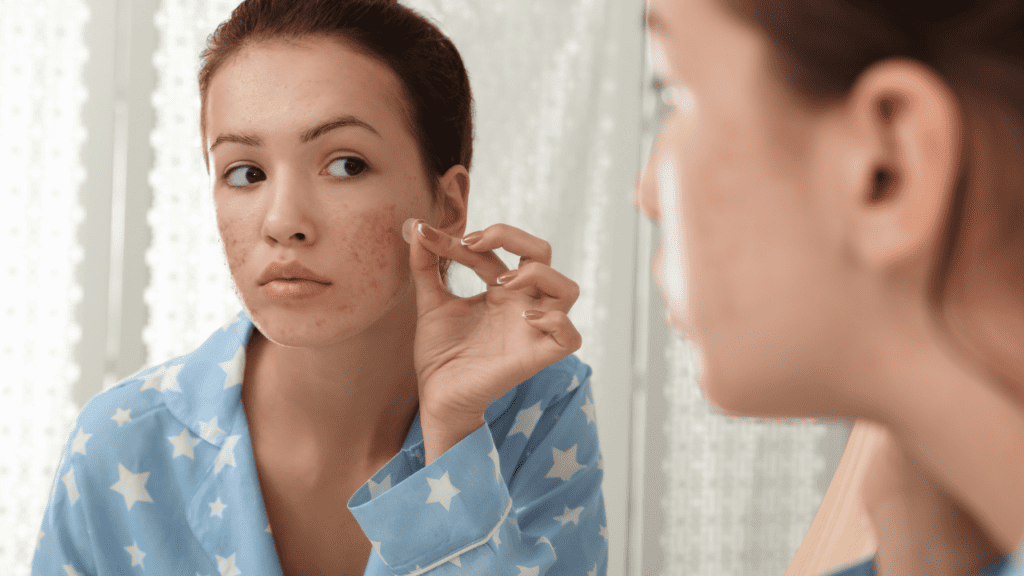
Pimple patches are a popular solution for acne-prone skin. They are designed to protect the skin from external irritants and help reduce inflammation and redness. However, many people wonder if pimple patches delay the healing process. In this section, we will explore the benefits and potential drawbacks of using pimple patches for healing.
Benefits of Using Pimple Patches
One of the main benefits of using pimple patches is that they can help protect the skin from further damage. Pimple patches create a barrier between the pimple and external irritants, such as dirt and bacteria, which can cause further breakouts. This protection can help speed up the healing process by allowing the skin to repair itself without being exposed to harmful elements.
Pimple patches can also help reduce inflammation and redness. Many patches contain ingredients such as salicylic acid, tea tree oil, and hydrocolloid, which can help soothe the skin and reduce swelling. This can help make the pimple less noticeable and promote faster healing.
Potential Drawbacks and Considerations

While pimple patches can be helpful, they may not be suitable for everyone. People with sensitive skin may experience irritation or redness from the adhesive on the patch. It is important to choose a patch that is specifically designed for sensitive skin or to test the patch on a small area of skin before using it on a larger area.
Another potential drawback of using pimple patches is that they may delay the healing process. Patches that are too thick or heavy can trap moisture and bacteria, which can cause the pimple to become more inflamed and take longer to heal. It is important to choose a patch that is breathable and allows the skin to breathe.
In conclusion, pimple patches can be a helpful tool for healing acne-prone skin. They can help protect the skin from external irritants and reduce inflammation and redness. However, it is important to choose a patch that is suitable for your skin type and to use it correctly to avoid any potential drawbacks.
Proper Application and Usage
When to Apply Pimple Patches
Pimple patches are an effective way to treat acne and prevent further skin damage. However, it is important to use them properly to get the most benefit. The best time to apply a pimple patch is when the pimple is at its peak, meaning it has come to a head and is ready to be drained. Applying the patch too early may not be effective, while applying it too late may cause further infection and delay healing.
Before applying the patch, it is important to cleanse the affected area thoroughly. This will help to prevent infection and ensure that the adhesive sticks properly. It is recommended to use a gentle cleanser that is suited for acne-prone skin. After cleansing, pat the area dry with a clean towel.
Instructions for Optimal Results
To apply the pimple patch, carefully remove it from its packaging and peel off the adhesive backing. Place the patch over the pimple and gently press down on the edges to ensure it sticks properly. Leave the patch on for several hours or overnight, depending on the instructions provided by the manufacturer.
It is important not to touch or pick at the patch while it is on the skin, as this can cause further irritation and delay healing. If the patch becomes dislodged or falls off, replace it with a new one.
Before using a pimple patch for the first time, it is recommended to do a patch test to ensure that you are not allergic to any of the ingredients. Apply a small patch to an unaffected area of skin and leave it on for a few hours. If there is no reaction, it is safe to use the patch on acne-prone skin.
In conclusion, pimple patches can be an effective way to treat acne and prevent further skin damage. By following the proper application and usage instructions, users can achieve optimal results and promote faster healing.
Alternative Acne Treatments
Acne can be treated using alternative methods, including topical and oral medications, natural remedies, and lifestyle changes.
Topical and Oral Medications
Topical medications such as azelaic acid, retinoids, and antibiotics can be used to treat acne. Azelaic acid is a naturally occurring acid that helps to unclog pores and reduce inflammation. Retinoids such as tretinoin, retinoic acid, and trifarotene can help to unclog pores and reduce inflammation. Antibiotics such as clindamycin and erythromycin can help to kill bacteria and reduce inflammation. Oral medications such as isotretinoin, spironolactone, and birth control pills can also be used to treat acne.
Isotretinoin is a powerful medication that is used to treat severe acne. It works by reducing the amount of oil produced by the skin. Spironolactone is a medication that is used to treat hormonal acne. It works by blocking the effects of androgens, which can cause acne. Birth control pills can also be used to treat hormonal acne, as they can help to regulate hormone levels.
Natural Remedies and Lifestyle Changes
Natural remedies such as aloe vera and vitamin A can be used to treat acne. Aloe vera has anti-inflammatory properties and can help to reduce redness and swelling. Vitamin A can help to reduce the production of oil in the skin. Lifestyle changes such as avoiding dairy products and reducing stress can also help to improve acne.
Injections such as cortisone can also be used to treat acne. Cortisone is a steroid that can help to reduce inflammation and swelling. However, it should only be used in severe cases of acne.
Acne patches are another alternative treatment for acne. They work by absorbing excess oil and reducing inflammation. However, there is some debate as to whether or not they can delay healing. While some studies suggest that they can help to speed up healing, others suggest that they can delay healing by preventing the skin from breathing.
Considerations for Sensitive Skin
When it comes to treating acne, pimple patches have become a popular option in recent years. However, people with sensitive skin may wonder if these patches are safe to use. Here are some considerations for those with sensitive skin when using pimple patches.
Choosing the Right Pimple Patch
When selecting a pimple patch, it is important to look for one that is non-comedogenic. This means that it will not clog pores or cause further breakouts. Some patches may also contain ingredients that can help soothe the skin and speed up healing, such as tea tree oil or hydrocolloid. It is important to read the label carefully and check for any potential irritants or allergens.
Managing Irritation and Allergic Reactions
Even with careful selection, some people with sensitive skin may still experience irritation or allergic reactions when using pimple patches. It is important to monitor the skin closely and discontinue use if any adverse reactions occur. Applying a thin layer of moisturizer or barrier cream around the affected area before applying the patch may also help protect the skin’s protective barrier.
In summary, pimple patches can be a safe and effective option for treating acne, even for those with sensitive skin. By choosing the right patch and taking steps to manage any potential irritation, people with sensitive skin can safely incorporate pimple patches into their acne treatment regimen.
Common Myths and Misconceptions
When it comes to treating acne, there are many myths and misconceptions that can lead to confusion and frustration. In this section, we will address some of the most common misconceptions about pimple patches and their role in the healing process.
Pimple Patches as a Cure-All
One common misconception about pimple patches is that they are a cure-all for acne. While pimple patches can be effective in reducing inflammation and preventing further breakouts, they are not a substitute for proper skincare and medical treatment. It’s important to remember that acne is a complex condition that can have many underlying causes, and there is no one-size-fits-all solution. Using pimple patches as a standalone treatment may delay the healing process and exacerbate the problem.
Misunderstanding the Healing Process
Another common misconception about pimple patches is that they delay the healing process. While it’s true that pimple patches do not cure acne, they can help speed up the healing process by absorbing excess oil and reducing inflammation. Pimple patches work by creating a moist environment that promotes healing and prevents scarring. However, it’s important to note that pimple patches are not a replacement for proper skincare and medical treatment. If you have severe or persistent acne, it’s important to consult a dermatologist for professional advice and treatment.
In conclusion, while pimple patches can be a useful tool in the fight against acne, it’s important to use them in conjunction with proper skincare and medical treatment. By understanding the limitations and benefits of pimple patches, you can make informed decisions about your acne treatment and achieve clearer, healthier skin.
Expert Opinions and Dermatologist Advice
Pimple patches are a popular skincare trend that claims to help heal pimples faster by protecting them from external irritants, absorbing excess oil, and promoting a moist environment for the wound to heal. However, there is a debate among dermatologists about whether pimple patches really work or if they delay healing.
What Dermatologists Say About Pimple Patches
According to GoodRx Health, a trusted source for healthcare information, some dermatologists believe that pimple patches can be helpful for certain types of pimples, such as those that are not inflamed or infected. Dermatologists suggest that pimple patches can help protect the skin barrier, control inflammation, and enhance natural healing, which can lead to a better final outcome.
However, other dermatologists are skeptical about the effectiveness of pimple patches and suggest that they may actually delay healing. Dermatologists caution that pimple patches can create a moist environment that may promote bacterial growth and cause infection. They also warn that pimple patches may cause irritation and inflammation, which can worsen the pimple and delay healing.
Clinical Studies and Research Findings
There is limited research on the effectiveness of pimple patches, but some studies suggest that they may be helpful for certain types of pimples. A study published in the Journal of Dermatology found that pimple patches containing hydrocolloid material can be effective in reducing the size and redness of pimples, as well as speeding up the healing process.
However, it is important to note that this study was small and focused on a specific type of pimple. More research is needed to determine the effectiveness of pimple patches for different types of pimples and skin types.
In conclusion, pimple patches have become a popular skincare trend, but there is a debate among dermatologists about their effectiveness and potential to delay healing. While some dermatologists suggest that pimple patches can be helpful for certain types of pimples, others are skeptical and caution against their use. As with any skincare product, it is important to consult with a dermatologist and follow sourcing policies to determine if pimple patches are right for your skin.
Frequently Asked Questions
Can pimple patches cause scarring on the skin?
Pimple patches are designed to prevent scarring by promoting wound healing. They create a moist environment that helps to speed up the healing process. However, if the pimple patch is not used correctly or left on for too long, it can cause skin irritation or even scarring. It is important to follow the instructions on the packaging and to remove the patch as soon as the pimple has flattened.
Are pimple patches effective on already popped pimples?
Pimple patches are not effective on already popped pimples. Once a pimple has been popped, it is an open wound that needs to be treated differently. Applying a pimple patch to an open wound can cause further irritation and may even lead to infection. It is recommended to use a wound healing ointment instead.
Is it possible for pimple patches to treat blackheads efficiently?
Pimple patches are not designed to treat blackheads. Blackheads are caused by clogged pores, and pimple patches are designed to treat pimples that have already formed. However, some pimple patches contain ingredients such as salicylic acid that can help to unclog pores and prevent the formation of new blackheads. It is important to read the packaging carefully to determine if the pimple patch is suitable for blackhead treatment.



